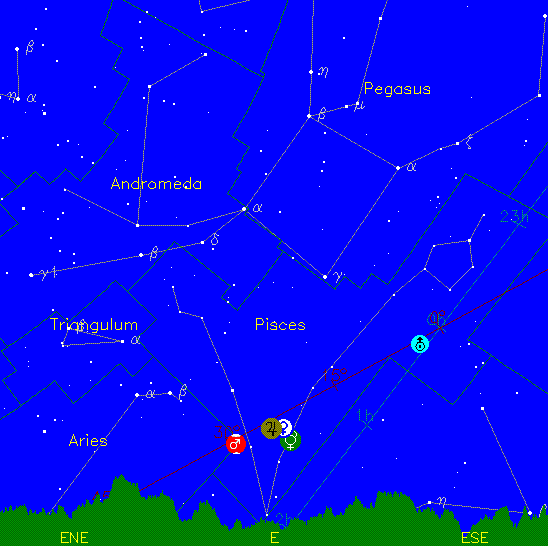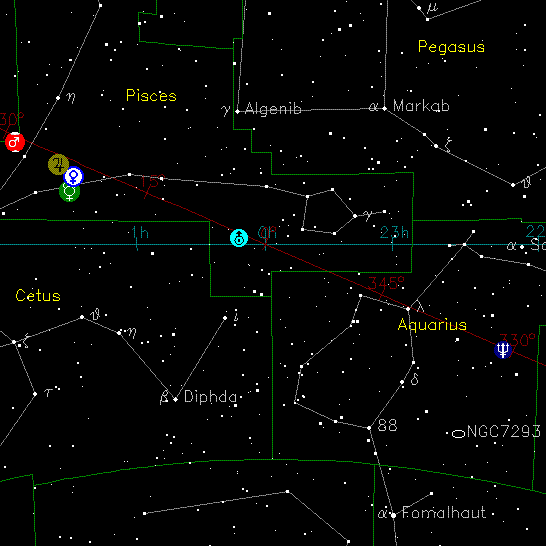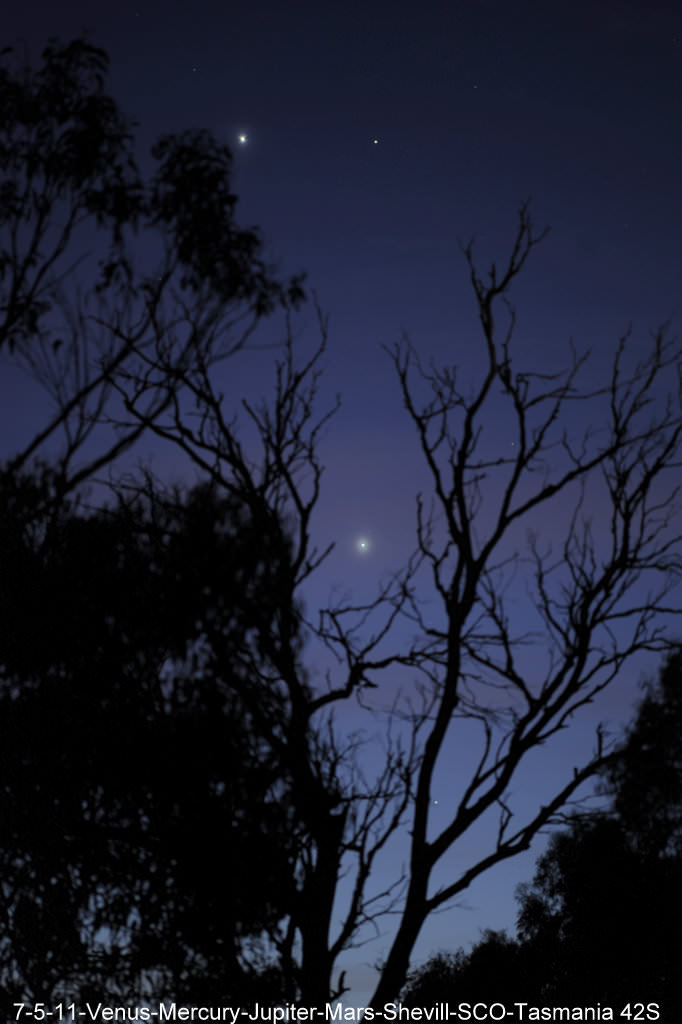[/caption]
No… What you’re looking at isn’t fireflies caught in the trees – but planets! Thanks to a little haze in Tasmania, incomparable sky shot artist, Shevill Mathers, was able to capture four planets lined up neatly before the dawn. One of the most beautiful facets of this image is that this is (with the exception of daily movement) how it appears to the unaided eye. Over the last couple of weeks, we’ve watched the inner planets gather along the ecliptic just before dawn… but even just a day makes a dramatic difference in their positions. We see it with our own eyes and we know it’s natural – but what makes it happen? Let’s find out…
Even though it’s been over 240 years since a very cool dude named Johannes Kepler was born, some of the laws he laid down about planetary motion still hold true today. Despite the fact he could have been jailed for supporting the Sun-centered Copernican theory, Kepler was teaching a class about the conjunction of Saturn and Jupiter when he realized that regular polygons bound one inscribed and one circumscribed circle at definite ratios, which, he reasoned, might be the geometrical basis of the Universe. From these conclusions, Kepler gave us three laws:
1. The orbit of every planet is an ellipse with the sun at one of the foci.
2. A line joining a planet and the sun sweeps out equal areas during equal intervals of time. (Suppose a planet takes one day to travel from point A to B. The lines from the Sun to A and B, together with the planet orbit, will define a (roughly triangular) area. This same amount of area will be formed every day regardless of where in its orbit the planet is. This means that the planet moves faster when it is closer to the Sun.) This is because the sun’s gravity accelerates the planet as it falls toward the Sun, and decelerates it on the way back out, but Kepler did not know that reason.
3. The squares of the orbital periods of planets are directly proportional to the cubes of the semi-major axis of the orbits. Thus, not only does the length of the orbit increase with distance, the orbital speed decreases, so that the increase of the orbital period is more than proportional.

Each day the second law is clearly demonstrated as the inner planets quickly change position because they are closer to the Sun. But what about the outer planets? They’re obeying the third law and will barely change positions over the next couple of months. Let’s take a look…

Right now is the best time of year to catch all the planets in our solar system in the same night. After sunset, grab Saturn… before dawn you’ll find Uranus and Neptune hanging around in the constellation of Aquarius. As skies begin to brighten, you’ll find Mars, Jupiter, Venus and Mercury rising in progression just ahead of the Sun. What a wonderful way to celebrate the morning… by standing on Earth and checking out planetary motion!


I think you meant “Mars, Jupiter, Venus and Mercury” in the last paragraph. Saturn is up after sundown right now.
I think you meant “Mars, Jupiter, Venus and Mercury” in the last paragraph. Saturn is up after sundown right now.
thanks! i corrected it. sometimes i get very excited and i get the proverbial cart before the horse. thank the stars it isn’t a dead horse!
wonderful stuff- I just love stars- though I don’t have the right jargon to mention what I would like to say. Simply-Thank you for sharing. Bren
wonderful stuff- I just love stars- though I don’t have the right jargon to mention what I would like to say. Simply-Thank you for sharing. Bren
That was truly great. Thanks Universetoday for reminding us the laws of Planetary motion.
I just thought I’d share this – I took it this morning at 0616 this morning (GMT+1200).
Jupiter, Venus, Mercury, and Mars over Dunedin City:
http://www.flickr.com/photos/60314130@N07/5710999074/